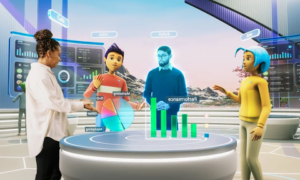In recent years, the field of neuroscience has witnessed groundbreaking advancements in Brain-Computer Interfaces (BCIs) and their application in neurorehabilitation. BCIs are innovative devices that bridge the gap between the human brain and computers, enabling direct communication and control. This technology holds immense promise for individuals with neurological impairments, offering new hope for improved rehabilitation outcomes. In this comprehensive article, we will delve into the fascinating world of BCIs, exploring their mechanisms, applications, and the transformative impact they have on neurorehabilitation.
Introduction
Understanding Brain-Computer Interfaces
A Brain-Computer Interface, often referred to as a BCI, is a communication system that allows direct interaction between the human brain and external devices, such as computers or robotic limbs. These interfaces rely on advanced neuroimaging techniques, including electroencephalography (EEG), functional magnetic resonance imaging (fMRI), and invasive neural recording, to interpret the brain’s electrical signals or neural activity patterns.
BCIs come in various forms, each tailored to specific applications and user requirements. Some of the most common types include:
EEG-Based BCIs: These non-invasive BCIs record electrical activity from the scalp, making them suitable for a wide range of applications, including neurorehabilitation.
Invasive BCIs: Implanted directly into the brain, invasive BCIs offer high precision and are often used for severe neurological conditions like locked-in syndrome.
Hybrid BCIs: These combine multiple sources of brain activity data, such as EEG and fMRI, to enhance accuracy and usability.
Applications in Neurorehabilitation
User Training: Effective use of BCIs often demands extensive practice, especially for those with severe neurological impairments.
Ethical and Privacy Concerns: As BCIs merge with technology, we must address data security, privacy, and consent concerns.
Challenges and Future Prospects
While BCIs hold tremendous promise for neurorehabilitation, several challenges must be addressed to fully realize their potential:
Cost and Accessibility: Currently, BCIs can be expensive, limiting access for many patients. Widespread adoption will require cost reductions and increased affordability.
User Training for BCIs often requires extensive practice, especially for those with severe neurological impairments. Ethical and privacy concerns regarding BCI integration with technology need careful attention, focusing on data security, privacy, and consent. Design BCIs for diverse neurological conditions and tailor them to individual patients.
Validating Clinical Efficacy and Safety: Ongoing research needs to validate the efficacy and safety of BCIs in various neurorehabilitation contexts.
Design BCIs to accommodate various neurological conditions and adapt to individual patient needs.
Conclusion
Brain-Computer Interfaces represent a remarkable advancement in the field of neurorehabilitation. “These innovative devices offer hope for individuals with neurological conditions, helping them regain independence and improve their lives. The journey towards a more inclusive and rehabilitative future is well underway, thanks to the power of Brain-Computer Interfaces.



































